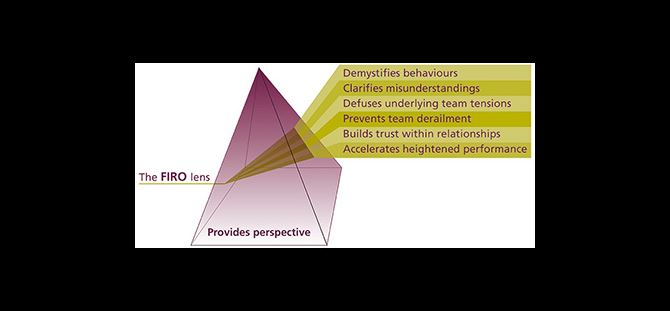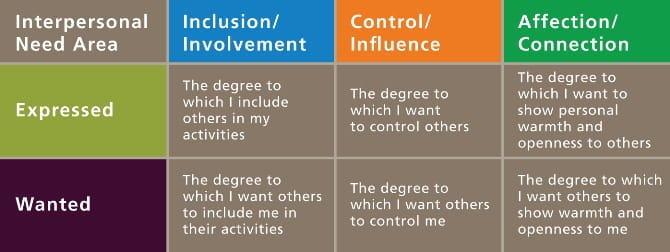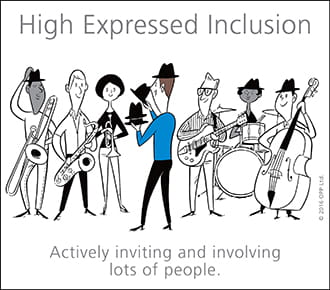FIRO and MBTI: the gold standard tools for coaching
Betsy Kendall COO and Head of Professional Services, OPP and Alice King, Senior Consultant, OPP
Often considered a winning combination in coaching, what is it specifically about the FIRO and MBTI assessments that adds depth and complexity to coaching?
The Myers-Briggs Type Indicator looks at four aspects of our personality that combine together dynamically to capture the fundamental elements of who we are and how we are motivated. This in itself is a powerful coaching tool as it indicates our preferred ways of taking in information, making decisions, and interacting with the world around us. In contrast, the FIRO instrument provides understanding around our interpersonal relationships: it illuminates what we express to others and what we expect back.
FIRO insights provide understanding of what drives people and how they manage their anxieties and fears. As such, it is an invaluable tool for coaches, both in terms of their own personal development and for its use in coaching sessions. In this post, the first of a series of three articles, we’ll explore how the two tools complement each other. Further posts will consider how you can best use FIRO when you are coaching leaders and, finally, how FIRO can help you as a coach to understand the impact of your own interpersonal needs when coaching.
So, what makes FIRO such a great complement to the MBTI tool?
The questionnaire assesses the three core needs that drive our relationships with other people. It isn’t a comprehensive assessment of the whole of personality in the way that the 16PF or OPQ tools are; rather, it puts a spotlight on interpersonal issues which shape people’s ability to build trust, influence others and establish productive relationships.

FIRO results can be challenging for a coachee, as it can pinpoint self-defeating reactions to certain people and situations, and provoke them to expand the options they consider.
The FIRO-B (B in the original questionnaire stands for Behaviour) tool is a 54 item self-report assessment, generating scores on 6 scales in three areas: Inclusion, Control and Affection (Involvement, Influence and Connection in the newer FIRO Business). It is unusual in the world of personality questionnaires because it directly assesses not only the degree to which a person likes to express the three behaviours, but also the degree to which he or she wants to receive those behaviours from others. This assessment of 'expressed' and 'wanted' behaviour allows direct exploration of core areas of compatibility between people: does what one person tends to give satisfy what the other wants to receive? This lens is tremendously powerful when a coachee wants to improve key working relationships, and is also invaluable in understanding team dynamics.

Expressed and wanted scores also provide insight into where an individual may be giving mixed messages. For example, a person may invite and involve others in their activities (high expressed inclusion) but be reluctant to join others in their activities (lower wanted inclusion). This person likes to be the host but rarely the guest. Mixed messages of this kind can impact on how trustworthy and straight forward an individual is perceived to be by others, especially those with high inclusion scores.


The apparent simplicity of FIRO hides its depth and power. The reason for this is that in conceptualising the FIRO assessment, its author Will Schutz carried out an extensive literature review of a wide range of theories of how individuals and groups develop and function. FIRO distils the essence and is not only about interpersonal needs at the level of behaviour, but also at the level of our self concept: how significant, competent or loveable we believe ourselves to be. Suffice to say, without going into depth about these issues here, these beliefs about ourselves are powerful motivators of behaviour and often present in coaching.
For instance, if a coachee does not feel that they are significant (or indeed they 'know' they are not significant) they may find it extremely difficult to put themselves in situations where they might be rejected (which would reinforce their feeling of insignificance). As part of a coaching conversation they may be resistant to, and even touchy about, talking about involving others more; and if they do make a plan to do more in this area, don’t be surprised if they don’t manage to act on this intention. It is this kind of insight that makes the FIRO tool so useful in coaching.
As with other psychometric tools, the FIRO framework provides context and a language for understanding the coachee’s style, and can give ideas of different options they might try going forward. Combined with MBTI Type, this provides a unique view of an individual’s interpersonal drivers and relationship issues, and provides a winning combination in coaching.
For more on using the FIRO and MBTI in coaching, tune in to our webcast.
If you're already using the FIRO and MBTI tools in combination then let us know your thoughts below. We're always interested to hear how people are using tools together.
Future blogs in this series
Thinking about using the FIRO tool in your leadership development or when coaching leaders? Our next blog post provides guidance.
The third post in this series will cover using FIRO to explore your own interpersonal needs to become a better coach. If you have questions we can help answer about this topic, post them below and we'll try to answer them in future posts.
Further reading
Valentine's reflection - an original FIRO case study revisited 20 years on